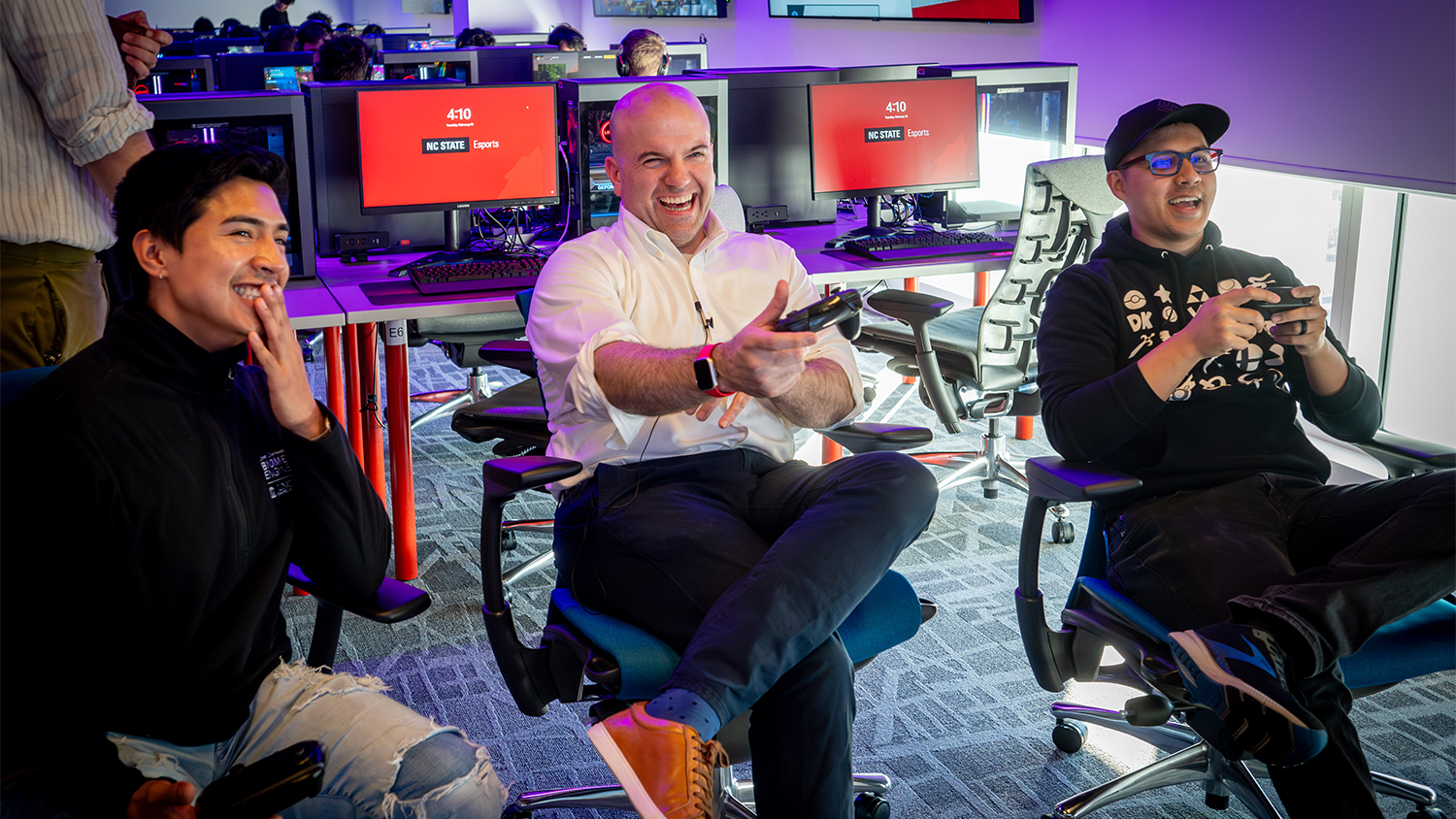Supporting women in COE strengthens student body
The incoming class of first-year engineering students is 33 percent women.

When the College of Engineering’s class of 2026 gets to campus, they’ll be part of an historic milestone. For the first time, the incoming engineering class is 33 percent women.
Reaching this point has taken years of dedicated work across NC State University, especially as the College faced years of stagnant and even declining women enrollment. In the process, faculty and staff members have learned two key lessons for success. First, programs work best when they meet students where they are. Second, when implementing a program that supports one group of students, the benefits tend to ripple out to all students.
“We began to focus on something which in retrospect seems logical. Most of the programming that we were doing … was aimed at changing the students to fit the engineering mold,” said Laura Bottomley, director of the Women in Engineering (WIE) Program.
“So, we said, ‘We’re going to stop doing that. We’re going to change engineering to fit the students.’”
At the same time WIE made this shift, it combined efforts with the Minority Engineering Programs (MEP) to form the Women and Minority Engineering Programs (WMEP). For the last 10 years, WMEP’s office has offered an open, welcoming space for students. Since making these changes, the College’s enrollment of women and minorities has increased.
Stronger together
The WIE program launched in 1997. By 2001, the College of Engineering (COE) was involved in the planning process with University Housing and what was then the College of Physical and Mathematical Sciences (PAMS), now College of Sciences, to start the Women in Science and Engineering (WISE) Village, a living and learning community for women majoring in science, technology, engineering and mathematics (STEM) disciplines.
Jo-Ann Cohen, who was associate dean for academic affairs for PAMS and is currently a professor in the Department of Mathematics, worked together with Sarah Rajala, who was associate dean for academic affairs for COE, and Susan Grant, the director of University Housing at the time.
Knowing all along that WISE would one day be open to women from the College of Natural Resources, College of Agriculture and Life Sciences and Wilson College of Textiles, the founding members engaged with representatives from across campus.
Both Rajala and Cohen were among the first women at NC State to rise through tenure-track STEM faculty ranks, and they wanted to support women interested in STEM disciplines, not just through a four-year degree, but also in graduate school.
“In the STEM disciplines we are doing a better job of recruiting women and improving the climate for women. But we are not there yet,” Cohen said. “Having a program like WISE that builds a cohort of women with similar interests and supports and empowers our women is a wonderful way of helping them pursue their academic passions.”
In the first 10 years of the program, women who participated in WISE were more likely to stay in STEM and matriculated into engineering majors at the end of their first year at a higher rate than women who did not live in the WISE Village.
Today, the program has grown from 56 students in its first year to almost 400 women living in the WISE Village. Demand is higher than the program is able to accommodate. Engineering students make up the largest percentage of WISE residents, but there are 44 majors represented. Kathy Titus-Becker, WISE’s current director, said the variety of disciplines is an asset for students.
“Students have different paths and sometimes obstacles to navigate, so it’s great to have spaces for women to feel empowered and encouraged,” Titus-Becker said. “This is especially helpful during occasional periods of tough times when they may encounter discriminatory behavior.”
Readying students from from grade school to post-grad
Beyond making sure students feel welcome when they get to college, WMEP has also focused efforts on increasing K-12 students’ interest in engineering, as well as ensuring students are ready for their post-graduation lives.
The Engineering Place, NC State’s K-20 engineering education program, has improved recruitment to NC State and, more importantly, reached more than 1 million students, teachers and parents, helping them to realize their engineering abilities and interests. Outreach to younger students is key to getting them interested in engineering.
“The Engineering Place grew up out of the Women in Engineering Program to get the word out to more people about what engineering really is, and that everyone can do engineering,” Bottomley said.
And when students are preparing to graduate, WMEP has resources in place for their futures, too. WMEP partners with the Career Development Center to help prepare all students for interviews and networking. Recent workshops have included how to identify employers with a commitment to diversity and inclusion, confidence building and virtual interviewing.
These programs together — WMEP, WISE, The Engineering Place and the Career Development Center — are making the College of Engineering a more inclusive, welcoming environment for women, for minority students and for all students, and that is reflected in the student body’s growing diversity.
While the College is now just one of a few large public engineering schools to hit the 33 percent milestone, Bottomley is already looking ahead to the next goal — 40 percent women, and eventually, a 50/50 split.
“Representation of all types is important in engineering because problems are not solved by the same types of minds that create them,” she said. “It’s well documented that more creative solutions, more cost-effective solutions, more effective solutions are created by more diverse teams.”
- Categories:


